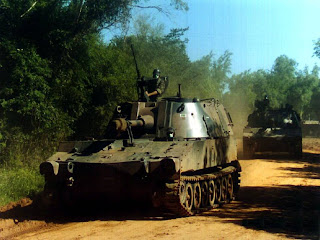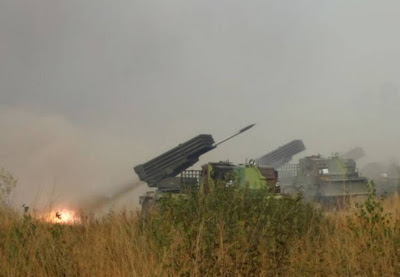 ..WHEN THEY COME FOR YUH...
..WHEN THEY COME FOR YUH...
Few in military circles believed that the Tamil Tigers would give up Vedithalthivu, the main sea Tiger base in the north western coast without a fight. True to its strategic importance, the Vedithalthivu Sea Tiger Base was heavily fortified.
A 10 Km trench was built from 2 km south of Vedithalthivu on the coast to Paramarayankulam, which is located 10km east of Vedithalthivu. That trench line functioned as the primary defence of the sea Tiger base. This defence line had been fortified with eight feet high sand dunes and the vicinity of the camp and its access routes had been heavily mined with anti personnel mines and booby traps. Inside the trench line aka primary defence line, the secondary defence line was located. Bunkers had been built in close proximity to each other and battle hardened Tiger cadres of the Charles Anthony Brigade had been assigned to front line duties.
Vedithalthivu had been under the control of the LTTE since the departure of the Indian Peace Keeping Force in 1990. In 1999, the security forces engaged in operation Ranagosa and attempted to seize control of the sea Tiger base, but in vain.
The military operation to capture the Vedithalthivu base gathered momentum after the clearing of the Rice Bowl area of the size of 152 sqkm. With the capture of the Rice Bowl area, the security forces succeeded cutting off the supply routes to the Vedithalthivu sea Tiger base.
On June 30, 2008, the two military divisions - 57 and 58 Divisions- who are inching into the Tiger hinterland of the Wanni linked up in Pallaimadu, west of Vedithalthivu. 10 Gajaba Regiment and 12 Gajaba Regiment attached to the 581 Brigade began to advance further northwards from 12th mile post on the A 32 Pooneryn Sangupiddy- Mannar road. The two battalions were supported by the fifth armoured corps.
On the southern flank, troops of 6 and 8 Gemunu Watch pushed further northwards. From the eastern direction, two other battalions - 9 GW and 12 GW- advanced towards the sea Tiger base. Second commando regiment of Sri Lankan Army was deployed in small teams to engage in reconnaissance duties, ambushes and sabotage attacks on the enemy logistics.
On July 3, 2008, three small groups of four -man commando teams of the Bravo Company under Capt. Bandara Subesinghe shattered the perceived impregnability of the camp with a daring raid against a fortified Tamil Tiger bunker line in the southern perimeters. This swift assault during which four commandos lost lives had been a turn around in the battle for Vedithalthivu.
Armed to the teeth, 12 Bravo men approached the Tiger bunker line, carefully avoiding the booby traps and anti personnel mines. When they launched an attack on the southern perimeter defences of the Tiger base, it took the defending Tiger cadres by surprise.
The three “four- man teams”- were led by Sergeant Asitha Kumara, Cpl N. V. Vanasinghe and Lance Cpl Indika Kumarage. The commandos advanced two hundred meters ahead of the heavily fortified Tiger defenses. During their assault, they decimated five LTTE bunkers.. As the battle raged, frenzied radio communications between the Tiger cadres and LTTE Mannar leadership indicated a collapse of the peripheral defences. Yet, the Tigers put up stiff resistance. MI 24 attack helicopters were called in for close air support.
Sergeant Asitha Kumara was hit by a Rocket Propel Grenade attack as he raided a Tiger bunker line; Cpl Vanasinghe thrust himself in defence of his wounded comrade. In the meantime, the Tigers inducted an estimated 200 cadres to fight the twelve commandos. During the fight, Cpl Vanasinghe was hit by a shrapnel and succumbed to injuries. The battle raged for five hours and the Army sent another team of commandos led by Lt Kollurai as replacement. Lt Kollurai was also wounded in the battle.
Finally, Lance Cpl Indika Kumarage decided to pull back with his wounded and fallen comrades. Sergeant Asitha Kumara and Cpl N.V. Vanasinghe were killed in action and the commandos were compelled to leave the body of Sergeant Asitha Kumara inside the trench when they pulled back after decimating nine bunkers of the LTTE. His body was later handed over to the Army through the ICRC.
Sergeant Asitha Kumara and Cpl Vanasinghe were posthumously promoted to the rank of Sergeant Major and Sergeant respectively. Intercepted LTTE communications revealed that 28 LTTE cadres had been killed in the five hour battle. Seventeen cadres were killed in the first thrust of the attack when the commandos decimated five bunkers. Cpl Ariyaratne, who was also killed in the battle after his team was sent for the assistance of the besieged commandos, was also promoted to the rank of Sergeant. Lance Cpl Indika Kumarage was promoted to the rank of Corporal and recommended for the Weera Vickrema Vibushana gallantry award.
This swift daring assault by the Bravo company of the 2nd Commando Brigade had been a turn around in the battle for Vedithalthivu. The capture of about 200 meters of the southern perimeter defence of the camp killing at least 28 cadres had been the prelude to a series of daring small group operations by 2nd Commando Brigade. These small opertions led to the fall of the mighty sea Tiger camp so fast.
With the capture of the southern perimeter, the Army Chief ordered Brig. Shavendra Silva to go ahead with the main operation to invade Vidattaltivu. The 8-man teams of the 2nd Commando Regiment was prepared for the operation on 10th of July. The teams were approaching Vidattaltivu from all directions.
Commandos operating in small teams had been carrying out surprise attacks on selected strategic locations in the LTTE defence line. Small groups of commandos approached the camp in every direction, mainly conducting reconnaissance missions on the LTTE build- up in the area. A stretch of the Mannar-Pooneryn Road was under observation by the 8-man team of Lt. Marasinghe of Delta group under Maj. Jaliya Dehideniya.
Alfa group of 2nd Commando Regiment under Maj. Samantha Kodituwakku attacked an LTTE bunker in Walimarandamadu area on July 13. The following day, a group of tigers erecting a bunker came under attack by the 8-man team of Sgt. Sanjeewa. Seven terrorists were killed in the confrontation. Five bodies of the slain Tiger cadres were retrieved by the commandos. Meanwhile, Echo group under Capt. Sha Hameed and the 8-man team of Cpl Rajakaruna were advancing from the direction of Paramarayankulam, east of Vidattaltivu. Capt. Nalin Soysa was the acting Officer Commanding (OC) of Bravo group under Maj. Ratnayake. The platoons under Lt. Thusitha Kumarage and Sgt Kumarasinghe (Rodney) were advancing along the Uvilanundiyaru canal bank in Vidattaltivu. Lt. Marasinghe’s and Cpl. Chandralal’s teams were about 600 metres behind them.
The 8-man teams of Echo group under Capt. Sha Hameed and the 8-man groups of Sgt. Rodney, Sgt. Bandara and Lt. Thusitha Kumarage advanced from several directions and joined them. They had reached the target area and were ready for the operation. In the morning of Tuesday 15th of July 2008, LTTE cadres had been deployed at regular intervals of 150 metres on access roads to Vidattaltivu and Pooneryn.
However, The Tigers, realising that Vidattaltivu was under siege, started to retreat by Tuesday afternoon. Cpl Chandralal’s team that climbed up a tamarind tree got at their targets accurately. The fugitive LTTE cadres transporting their heavy weapons by tractors and Canter lorries came under artillery attack in Thaddampiddi teak plantation losing at least 50 of them. By Wednesday morning (16), the tigers destroyed their vehicles and the main water tank in Vidattaltivu. They blasted the buildings and the vehicles one by one.
Meanwhile, Echo group of Capt. Sha Hameed lay in ambush to target vehicles leaving Vidattaltivu base. They gunned down two cadres attempting to flee on a motorcycle. The soldiers immediately hid the bodies and prepared for the next attack. The soldiers noticed two trucks moving towards Vidattaltivu. When they opened fire, one truck sped off despite gunshot injuries to its driver while the other ran off the road and turned turtle. One of the cadres was captured. The two trucks had come to move camp at Vidattaltivu.
Sgt. Bandara, Sgt. Kumarasinghe and Lt. Thusitha Kumarage proceeded toward Vidattaltivu by the west of the main road. LCpl. Priyantha and his team joined them. Bravo group was advancing from the east of Vidattaltivu and Delta group from the southeast. When the four groups met, they were about a km. ahead of Vidattaltivu.
Alpha group under Maj. Samantha Kodituwakku entered from the direction of the town and Echo group from the direction of the lagoon. Bravo group entered from the east. The 581 and 583 Brigades broke into the FDL from the direction of Nedunkandala. 6 Gemunu broke down a part of the FDL. The base, earlier manned by about 200 LTTE cadres, was deserted in the face of the military operation.
The MI 24 attack helicopters were called in to target the sea Tiger boats. Fighter jets of the Sri Lanka Air Force also conducted several sorties against another sea Tiger camp located in Vallaipadu, north of Vedithalthivu The only casualty in the military mission was Lance Cpl Kumara of the Delta team of the 2 commando regiment. He was caught in a booby trap as he stormed an LTTE bunker.
The advancing Commandos, under LTTE gunfire, broke into the LTTE stronghold. Vidattaltivu town fell to the security forces by Wednesday 16th of July 2008, afternoon. They painted over “Welcome to Vidattaltivu Sea Tiger Base” on a board at the entrance to the camp with “Welcome to Commando Base”, hoisted the Lion Flag and celebrated their victory.
“It was a successful operation. Our forces marched steadily and intensified their attacks after July 14. LTTE leaders Bhanu and Luxman lost control of their forces. Our soldiers fought valiantly and broke down the most formidable LTTE FDL. The Tigers fled from the area faster than they did during the attack on the Rice Bowl. Their leaders had nowhere to turn,” said Brig. Shavendra Silva.























